Now that we have our central cluster from the previous article, we can start deploying our dev and prod clusters.
All the code for this article can be found on jacobhjkim/declarative-eks-tutorial.
Table of Contents
move to section dev-aws-infra-setup Dev AWS Infra Setup
Dev AWS Infra Setup
We are going to use Terraform to create AWS infrastructure for the dev cluster. We will use Atlantis to apply Terraform changes with pull requests.
Dev VPC
Like we did for the central VPC, change directory to terraform/dev/vpc and update Terraform files as you did before. Unlike the central VPC, instead of using terraform apply command, we are going to use Atlantis to apply the Terraform changes. Create a pull request with the changes. Atlantis will create a plan and post it to the pull request. You can review the plan and approve the pull request. Atlantis will then apply the changes.
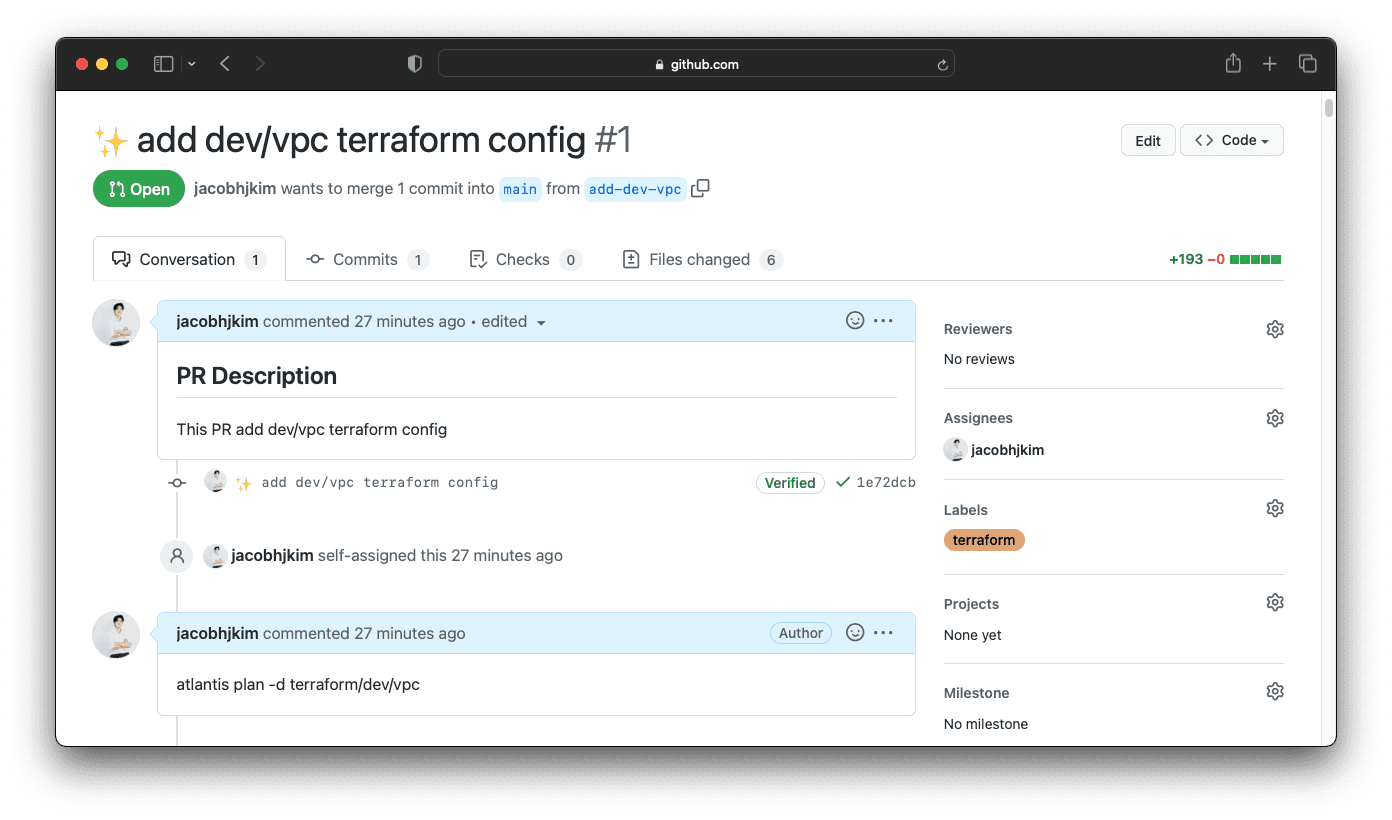
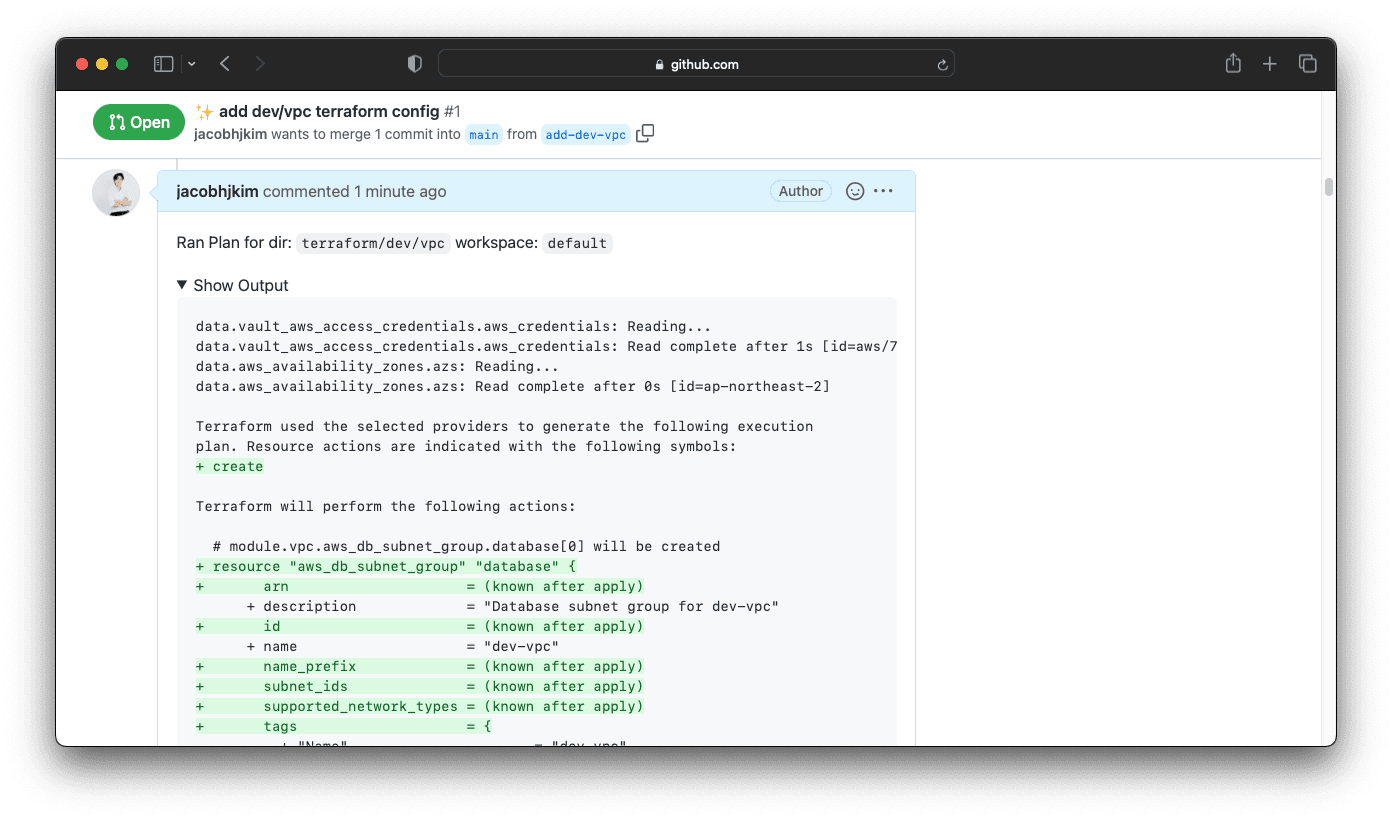
Once you and your teammates approve the pull request, comment atlantis apply to Atlantis. Atlantis will then apply the changes.
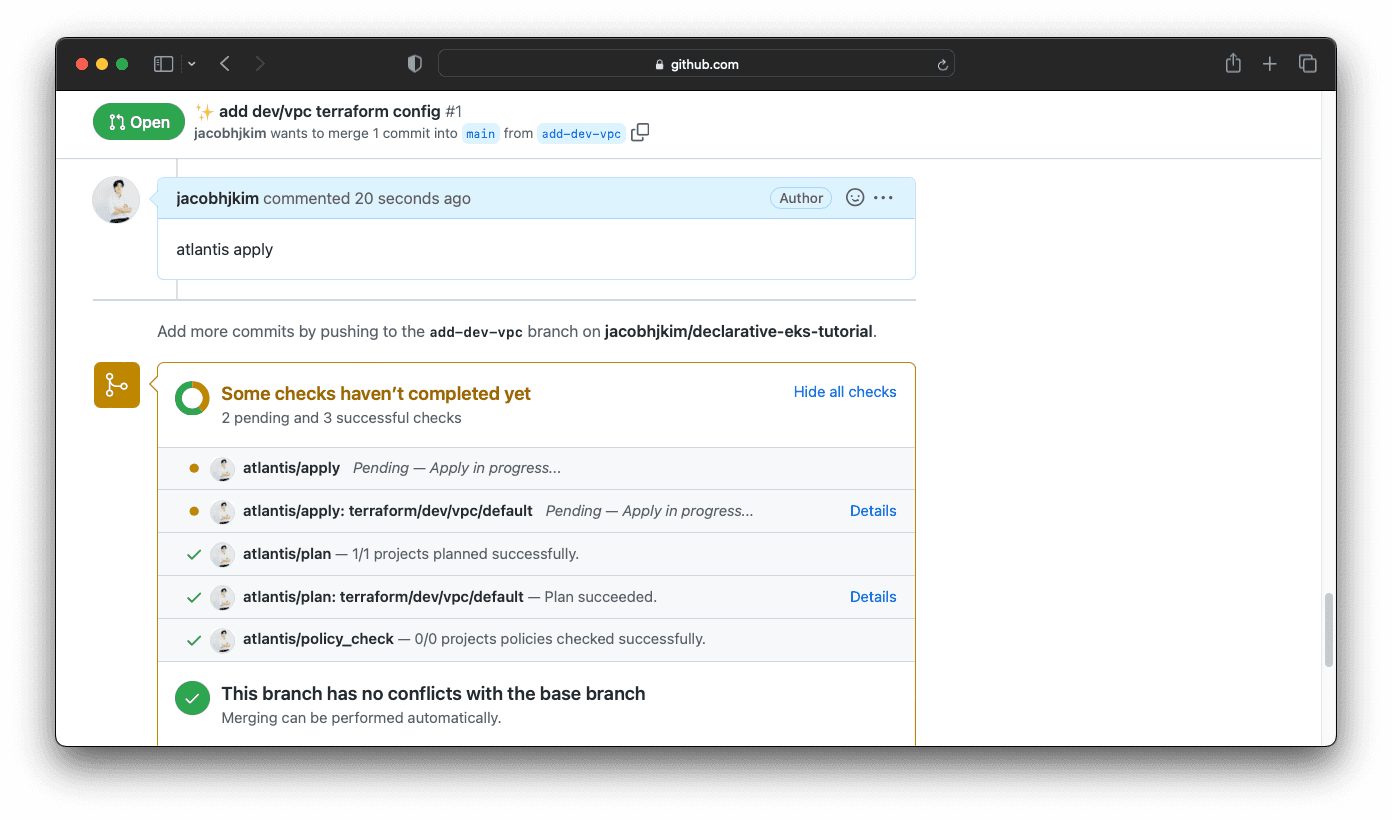
It can take a few minutes for the VPC to be created. Once the VPC is created, Atlantis will post a comment to the pull request. You can then merge the pull request.
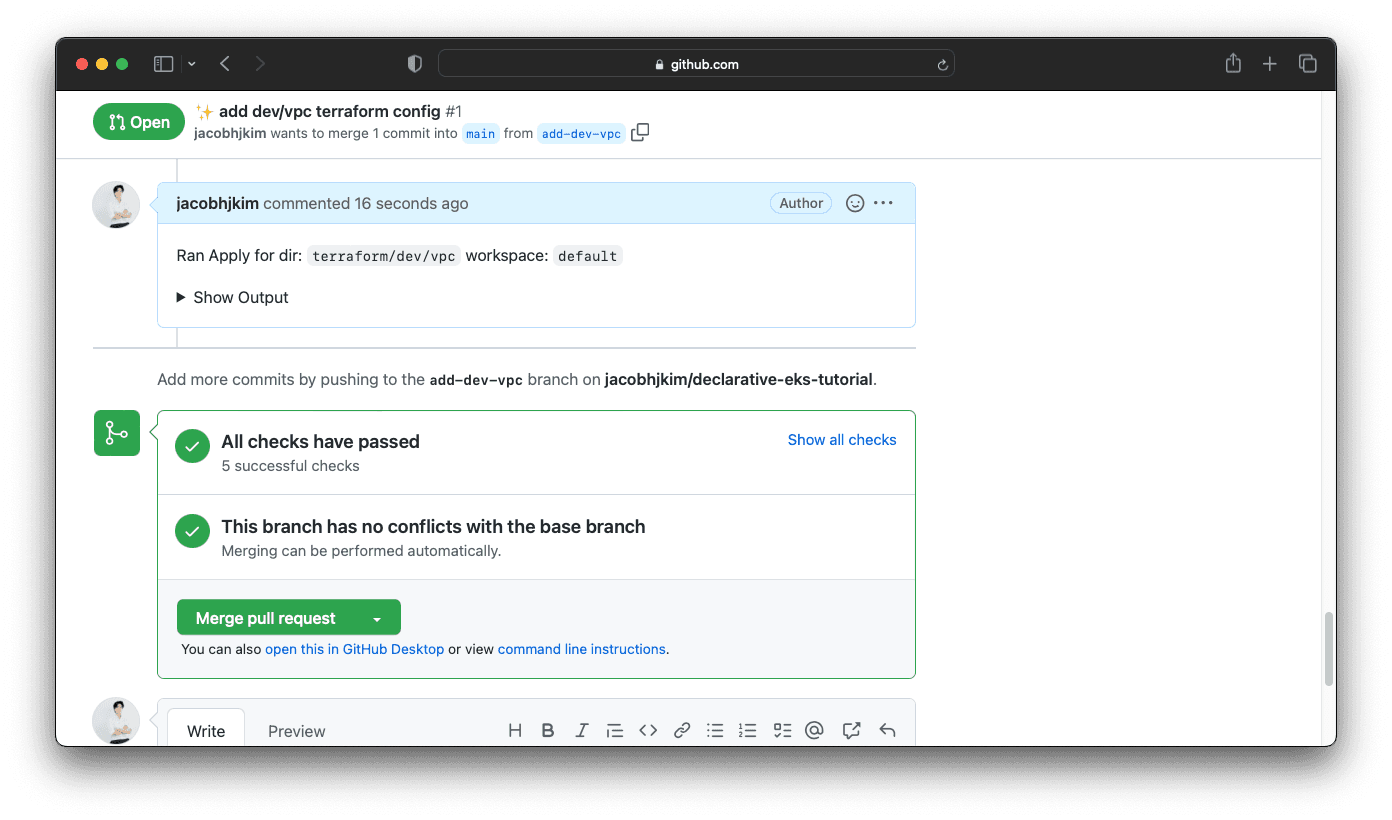
You just deployed a VPC with Atlantis! How was it? I think Atlantis is a great tool that allows DevOps teams to automate Terraform workflow with pull requests.
Dev EKS
Hopefully, you are now familiar with the process of creating AWS infrastructure with Atlantis. Updateterraform/dev/eks Terraform files with appropriate values and create a pull request.
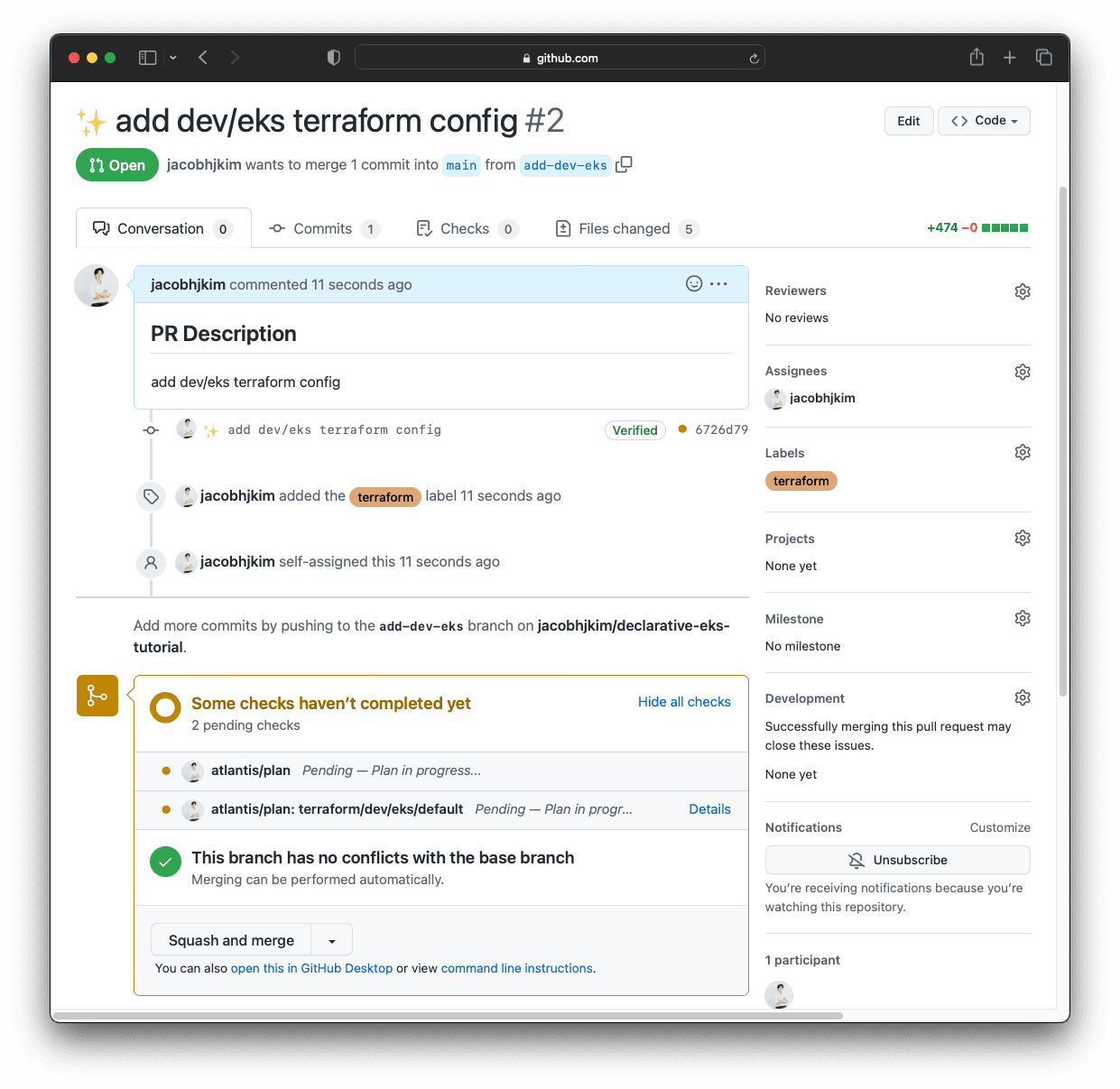
If the plan seems valid and you are ready to apply, comment atlantis apply to Atlantis. After a few minutes, you should be able to see a new EKS cluster in your AWS console.
Terraform Lock File
terraform providers lock -platform=windows_amd64 -platform=darwin_amd64 -platform=linux_amd64 -platform=darwin_arm64 -platform=linux_arm64 You can check issue #28041 for more information.Once you have created the EKS cluster, update the kubectl context with the following command:
$ aws eks --region ap-northeast-2 update-kubeconfig --name dev
$ kubectl config get-contexts
CURRENT NAME CLUSTER AUTHINFO NAMESPACE
arn:aws:eks:ap-northeast-2:765355018960:cluster/central arn:aws:eks:ap-northeast-2:765355018960:cluster/central arn:aws:eks:ap-northeast-2:765355018960:cluster/central
* arn:aws:eks:ap-northeast-2:765355018960:cluster/dev arn:aws:eks:ap-northeast-2:765355018960:cluster/dev arn:aws:eks:ap-northeast-2:765355018960:cluster/dev
$ kubectl config use-context arn:aws:eks:ap-northeast-2:765355018960:cluster/dev
Switched to context "arn:aws:eks:ap-northeast-2:765355018960:cluster/dev".
$ kubectl get nodes
NAME STATUS ROLES AGE VERSION
ip-10-98-4-110.ap-northeast-2.compute.internal Ready <none> 4m14s v1.23.9-eks-ba74326Dev EKS Addons
EKS addons allow the dev cluster to access Vault and Argo CD in the central cluster. Update terraform/dev/eksfiles with appropriate values and create a pull request. Run atlantis plan and atlantis apply. Once everything is applied, check Vault to see if Kubernetes authentication is successfully created. There will be a secret created under cluster/dev/argocd
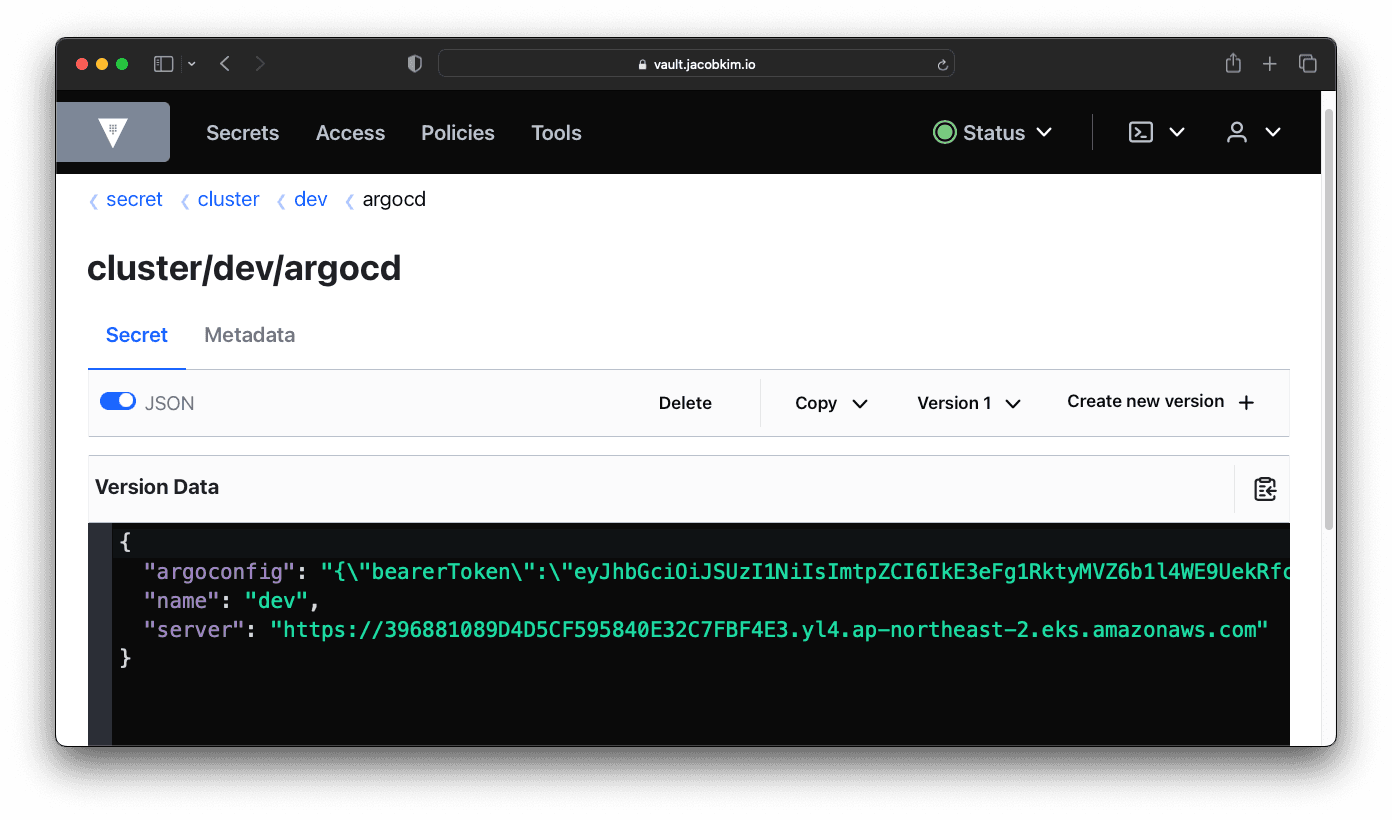
This allows central Argo CD to deploy applications to the dev cluster. But there is just one thing we need to do before deploying stuff to the dev cluster with Argo CD. Update kubernetes/charts/argocd/values-central.yaml like below:
1- clusters: []
2+ clusters:
3+ - name: devSince Argo CD is managed via Helm, deploy the changes with the following command:
- clusters: []
+ clusters:
+ - name: devYou can check Argo CD UI to check whether the dev cluster is configured correctly.
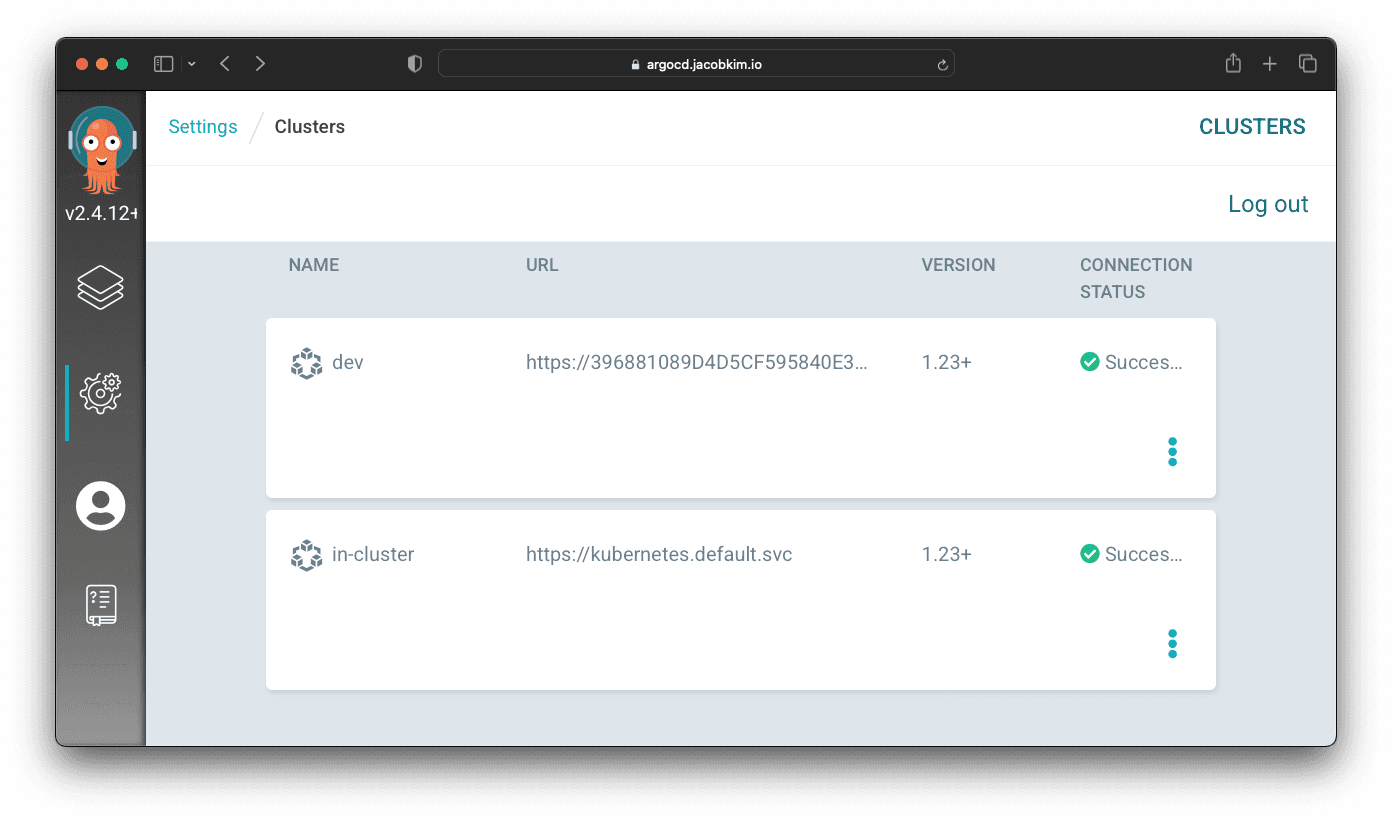
Manage Argo CD Using Argo CD
move to section dev-helm-chart-installation Dev Helm Chart Installation
Dev Helm Chart Installation
Since we are familiar with Argo CD GitOps workflow, let’s deploy all the Kubernetes applications at once to the dev cluster. Update the following:
charts/karpenter/values-dev.yamlcharts/aws-ebs-csi-driver/values-dev.yamlcharts/aws-load-balancer-controller/values-dev.yamlcharts/external-dns/values-dev.yamlcharts/echo-server/values-dev.yamlcharts/external-secrets-operator/values-dev.yaml
Lastly, update charts/argocd-gitops/values-dev.yaml with appropriate values. Commit and push, and Argo CD will deploy all the applications to the dev cluster. Your charts/argocd-gitops/values-dev should something like this.
clusterName: dev
clusterRegion: ap-northeast-2
infraAccountId: "765355018960"
rootNamespace: argocd
stage: dev
defaultRepoURL: https://github.com/jacobhjkim/declarative-eks-tutorial
defaultTargetRevision: main
defaultProject: dev-apps
destinationServer: https://396881089D4D5CF595840E32C7FBF4E3.yl4.ap-northeast-2.eks.amazonaws.com
apps:
- name: aws-ebs-csi-driver
namespace: kube-system
source:
path: kubernetes/charts/aws-ebs-csi-driver
valueFiles:
- values-dev.yaml
- name: aws-load-balancer-controller
namespace: kube-system
source:
path: kubernetes/charts/aws-load-balancer-controller
valueFiles:
- values-dev.yaml
- name: cert-manager
namespace: kube-system
source:
path: kubernetes/charts/cert-manager
valueFiles:
- values-dev.yaml
- name: echo-server
namespace: default
source:
path: kubernetes/charts/echo-server
valueFiles:
- values-dev.yaml
- name: external-dns
namespace: kube-system
source:
path: kubernetes/charts/external-dns
valueFiles:
- values-dev.yaml
- name: external-secrets-operator
namespace: external-secrets-operator
source:
path: kubernetes/charts/external-secrets-operator
valueFiles:
- values-dev.yaml
- name: karpenter
namespace: karpenter
source:
path: kubernetes/charts/karpenter
valueFiles:
- values-dev.yamlCheck argocd.[YOUR_DOMAIN_NAME]/applications/argocd-dev-apps to see Argo CD deploying all the applications at once.
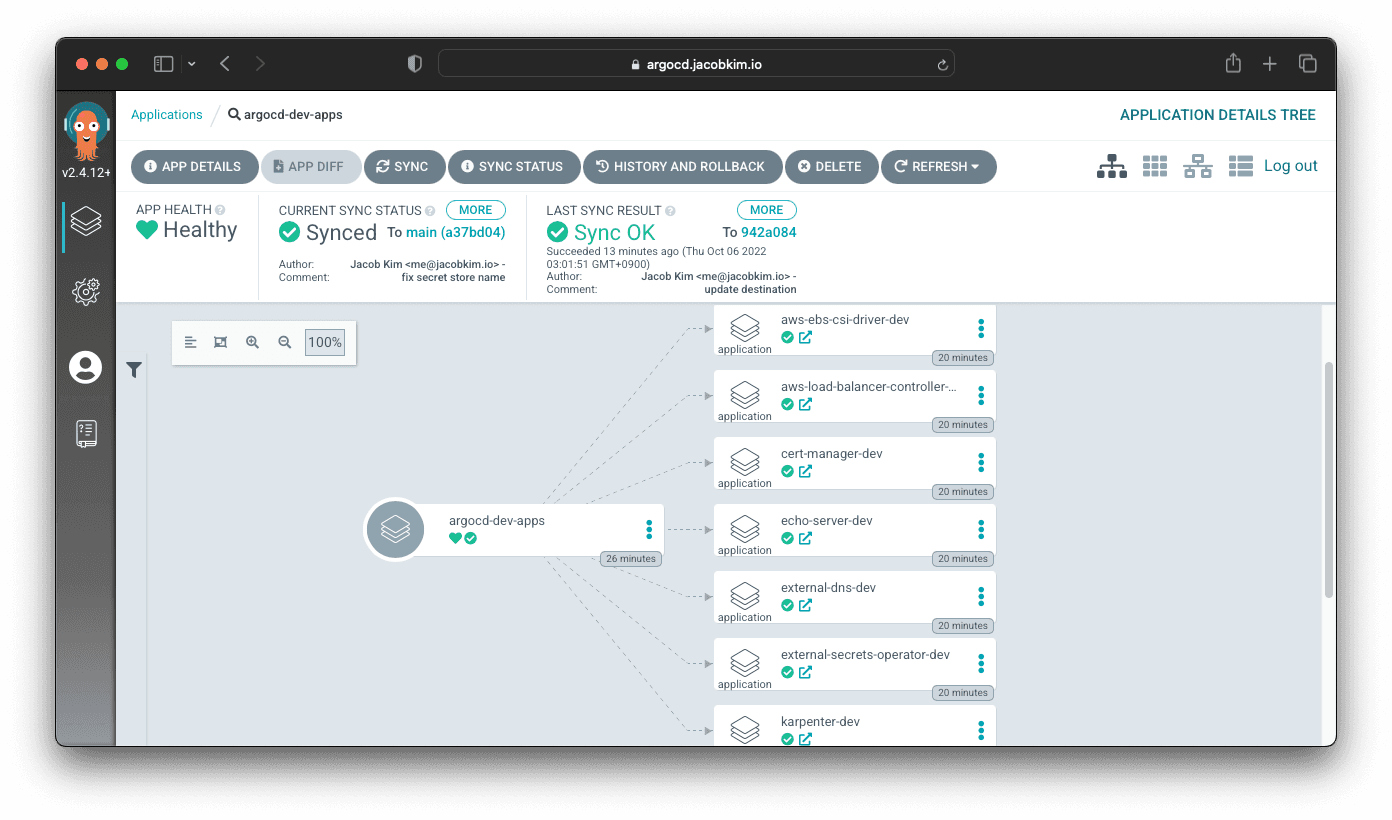
move to section the-power-of-gitops-with-argo-cd The Power of GitOps with Argo CD
The Power of GitOps with Argo CD

How was deploying the dev cluster compared to the central cluster? It was much easier, right? Once you have setup the GitOps pipeline with Argo CD, deploying another cluster is just a matter of updating Terraform files and Helm Chart values.
move to section prod-cluster-deployment Prod Cluster Deployment
Prod Cluster Deployment
Deploying the prod cluster is similar to the dev cluster. The differences are the following:
- Cluster Name
- Region (
ap-northeast-2->us-east-1) - Access Control
Since deploying the prod cluster is just a matter of updating the Terraform files and Helm Chart values, prod cluster deployment is left as an exercise for the reader. 😉
Other Declarative Multi-region EKS Series :
- Manage multi-region EKS the Declarative Way - Part 0: Introduction
- Manage multi-region EKS the Declarative Way - Part 1: Central Infrastructure
- Manage multi-region EKS the Declarative Way - Part 2: Central Helm
- Manage multi-region EKS the Declarative Way - Part 4: CI/CD